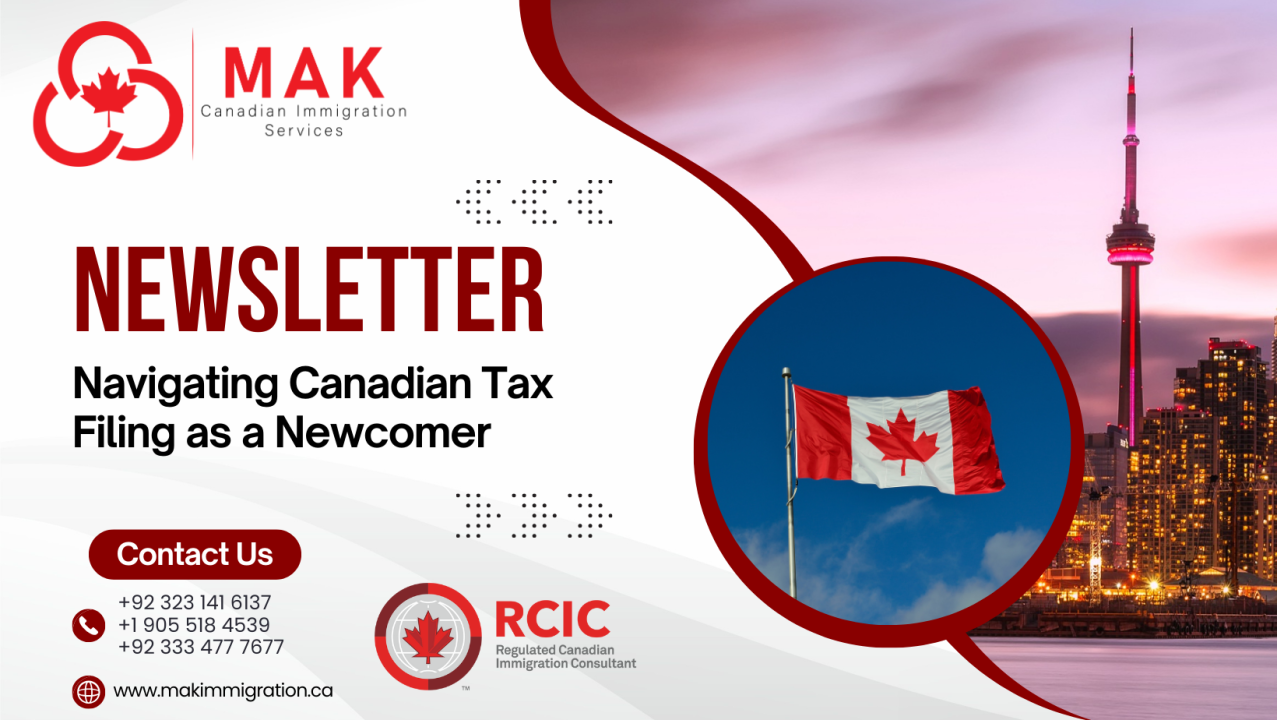
Navigating Canadian Tax Filing as a Newcomer
Usman Khalil
Regulated Canadian Immigration Consultant | CPA | MSc | Licensed Foreign Worker Recruiter (Government of Saskatchewan)
Newcomers to Canada may find reporting fees scary the first time they do. However, this interaction is usually simpler than it appears. The Canadian Revenue Agency (CRA) requires confidential individuals to report their previous year's charges at the start of each fiscal year. This is essential for tracking personal costs.
All Canadian workers depend on two evaluation rates. The workplace establishes the typical personal expense first, and the Canadian government determines the bureaucratic duty rate second. The level of pay affects charge rates. If an Ontario resident bought $60,000 in computer-aided design last year, they would pay 5.05% on the first $49,231 and 9.15% on the next $10,769. By April 30th, Canada must record individual spending. Inability to document expenses might result in harsher punishments and, shockingly, tax avoidance charges.
How can I file Canadian government forms?
There are many ways to charge in Canada. Even more specifically, CRA sees five ways to report expenses. This is the most typical way to document assessment forms. For different fiscal years, the CRA suggests government-run recording programs or sites. These devices should be approved for NETFILE administrations, which connect directly to the CRA and allow speedy electronic documenting.?
Electronic filings are free and require 14 days to process from recording; however, costs vary by service level. Assessment form filers may qualify for a duty discount, which normally reimburses them with additional CRA funding or refunds and credits from other projects. The CRA lists supported websites and programs for electronic charge documentation. In two weeks or less, CRA estimates this way allows re-evaluation.
领英推荐
Canadian charge filers can authorize a delegate to manage their charges. This could be a bookkeeper, friend, relative, or anyone the filer trusts with financial data. Delegate approval is needed here. Filer and delegates can discuss costs. CRA estimates a 14-day standby season using this strategy.
Individuals with low incomes or expenses in Canada may qualify for free local charging stations. These institutions routinely document assessment forms for free. Walk-in, drop-off, or appointment facilities sometimes allow virtual appointments. The CRA predicts two weeks to process these charges.?
A discounter or expense preparer may compute and pay for a government form upfront. Although this method is costly, consumers can acquire their assessment form promptly, but the discounter removes a support component. CRA consistency initiatives safeguard filers using these administrations under the Expense Refund Limiting Demonstration.
If you prefer not to document online, you can alternatively record your opinions on paper. This method is becoming less common because it takes two months to process before April 30th. The method is free for anyone to use. This requires T1 personal expense bundles.
Ensure a smooth transition into Canadian tax filing by leveraging these strategies, and for more updates, visit our website at MAK Immigration Consultants www.makimmigration.ca.